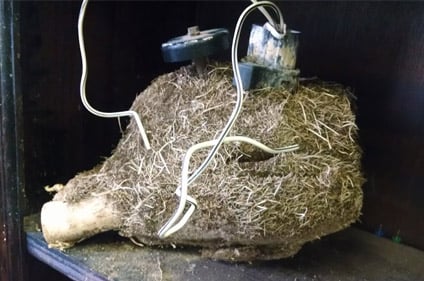Co-polymer gels are those tiny crystals that will swell up when water is added turning into a gooey, gelatinous blob. There are several brands on the market, and many formulations of these materials are used in everyday products including cosmetics, soap, shampoo, contact lenses, and most famously diapers.
There is also ongoing work looking at injection uses for plastic surgery and medical issues as problematic as incontinence. They have been used for years in color or landscape plantings along with greenhouse and nursery operations. We seem to accept their water management capabilities with blind faith, but what are they really and what can they do? Are they really the miracle product to reduce and conserve water?
There are two broad classes of these materials: soluble or linear and insoluble or cross-linked. The soluble form has been used in erosion control operations for some time, but this is not the class we are most familiar with.
The tiny crystals are said to be able to absorb up to 200 times their weight in water, holding it in reserve for the plant as resources become less available.
When used properly, they are incorporated into the soil where the mass of roots will be. There are multiple claims of a reduction of water use by 50% for 3 to 5 years, but are these claims accurate? In some studies, there has been an increase of root mass and leaf mass weight on plots where PAMs are used. This stands to reason because a drought stressed plant will shut down growth and root development further concluding that these products act as a water reservoir when soil moisture is lacking.
Plant roots have a tendency to follow water sources. You might have seen leaky water valves so engulfed with roots as to become unrecognizable. Or the circumstances where tree roots will tend to grow upwards in heavily mulched areas as that is where the moisture is most available.
What happens to root depth when these crystals are their supply for water? There is real talk of the degradation of these materials including the actual time that they are effective and what they degrade into. The question here becomes how long do these products really last, and are they degraded into something that is less desirable?
These are more for the experts to determine, but over application is generally one of the biggest issues. The notion that you can never have enough of a good thing clearly is wrong in this case. In some cases, newly installed plants may pop out of the hole or lay on their side in ornamental beds due to expansion of excess PAM in the planting hole.
We've also seen improperly incorporated gels on the surface, making for a messy bed maintenance situation. Gels purged out of containerized plants following a freeze lead you to wonder how long these can be your friend in the soil, especially if you did not notice a distinct reduction in water needs of those plants. Lastly, these types of materials are not easily used on existing landscapes, further limiting their value.
Hopefully the above description will help distinguish between polymers and wetting agents and help to determine which will be a better fit for certain uses.
Please don’t hesitate to reach out to the Ewing Technical Services Team with questions, future topic ideas, and for weed identification.




